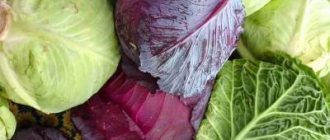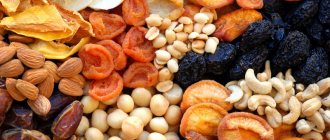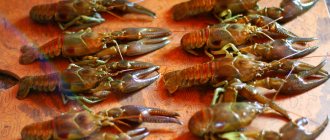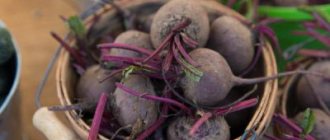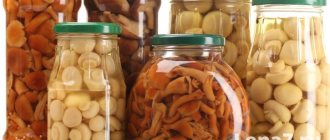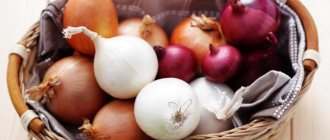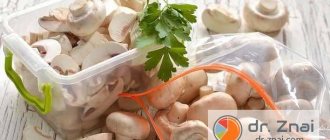How to choose fruits for storage
Conventionally, persimmon berries are divided into tart and non-tart. The first type, after ripening, becomes jelly-like and melts in the mouth. The second, regardless of ripeness, remains dense in structure with a thick peel. The following types of persimmons are most often found on the market:
| Name | Fruit | Taste |
| Chocolate girl (king) | Round berries with a pit, orange thin skin and dark pulp | Light chocolate flavor with a nutty undertone |
| Tangerine | Seedless berries of bright orange color | The pulp is very sweet, jelly-like consistency |
| Fig | Flattened reddish-orange berries | Tart, tender, reminiscent of figs |
| Bull's heart | Large seedless berries | The pulp is tender only when ripe |
| Sharon | Hybrid of apple and persimmon | Tender without astringency |
| Regular | Pale orange berries | The astringency remains even when ripe |
| Large kinglet | Large berries with thick skin | Tender and sweet pulp |
My dears, I list the signs of ripeness:
- rich red-orange color;
- thin and smooth peel;
- stalk brown;
- dry amniotic leaves.
You know, even in stores and markets, sellers cannot tell what type of persimmon it is. Therefore, you will have to choose based on inspection of the berries when purchasing. First, pay attention to the color, ripe fruits are orange or dark brown. Then inspect the peel carefully. If there are black spots and cracks on the surface, the berries will not be stored for long. Look at the stalk; if the sepals are dry, the fruit is ripe. Unripe persimmons have green leaves and pale yellow fruit.
Take and taste the berry to the touch, the ripe fruit is soft, when pressed, a mark remains, the peel does not lag behind the pulp. Buy whole fruits with thin, glossy, translucent skin and brown streaks or uniform coloring.
Author's note
Natalia Papanova
Blog author
When choosing, give preference to Korolka or Shokoladnitsa; both types are considered a king variety, but differ in taste.
If you bought a chocolate maker and you still have some seeds from it, find out how to plant persimmons at home so that the fruits will bear on an evergreen shrub.
Selection rules
Persimmon ripening continues from the end of September until the onset of the first frost. Fruits of varying degrees of ripeness are available for sale, and you need to choose them depending on the purpose: fresh consumption or harvesting.
In any case, preference should be given to whole and smooth berries without obvious damage, dark spots, cracks and dents.
Selection of ripe persimmons
Signs of complete ripeness of fruits:
- The color is bright orange, closer to dark, the entire surface is slightly shiny and even in color. Sometimes there may be a whitish coating on the peel.
- Areas of light orange color, especially with a milky tint, are a sign of insufficient ripeness. The pulp of such a berry will taste astringent.
- The stalk with leaves (tail) is completely dry, brown in color, the leaves easily break and crumble.
- The surface of a ripe persimmon is slightly soft and can be slightly pressed under your fingers. Excessive softness, flabbyness and a feeling of liquid pulp indicate that the fruit may have been frozen.
- In the Korolek variety, even ripe fruits will be hard. On the surface and inside (on the pulp) they may have stripes and inclusions of brown color. Sometimes there are many brown areas, until the flesh is completely stained. This is a feature of the Chocolate Korolek variety.
Unripe fruits
Light orange berries with uneven color, hard and astringent in taste, are considered suitable for harvesting for the winter.
The peculiarities of persimmon ripening allow it to be collected in a state of technical ripeness, that is, not ripe enough. In this state, fruits can be stored for up to 6 months. Metabolic processes in the pulp continue, and gradual ripening occurs. The content of nutrients in them does not change, and the taste only improves. In this case, you should choose a cool, well-ventilated room to store persimmons.
Proper storage of persimmons in the refrigerator
Storage conditions in the refrigerator are zero temperature and humidity of at least 80%.
Therefore, I do not recommend using plastic bags for storage; the accumulation of condensation provokes rapid rotting, especially of overripe berries.
Before putting in the refrigerator, wipe the fruits with a dry cloth, place them in a paper bag or wrap them in a paper napkin. This will provide access to fresh air. To preserve persimmons longer, add bananas to the bag. If you cut the berries into slices, store them for no more than three days.
Useful video storing persimmons with apples
What persimmons are allowed to be stored?
Fruits to be preserved can be dried, frozen or cooled. They need to be placed in room heat or in the refrigerator. It is recommended to keep fruits at 0 and +1 degrees Celsius.
In the refrigerator there is a place for persimmons in the fruit department. Temperature jumps are unacceptable, since this can greatly affect the taste of the product.
It is worth taking care of the air humidity - it should be about ninety percent.
How to dry persimmons
There are three ways to dry exotic fruit: in the oven, microwave and in the fresh air. The first two methods involve heat treatment. The fruits are exposed to high temperatures, eliminating harmful microorganisms and bacteria.
Dried fruits are covered with a white coating of sugar crystals
In the oven
Dry persimmons whole or sliced in an electric oven; a gas stove does not provide a stable temperature.
Cover a baking sheet with food foil or parchment, lay out the berries and sprinkle with lemon juice. Preheat the oven to 90 degrees and place the baking sheet for 3 hours. Leave the door open to allow moisture to evaporate.
In the microwave
Cut the fruit into rings, place on a plate and microwave for 15-20 minutes. Dry on low power to prevent the fruit from burning. After 10 minutes, open the microwave to evaporate any accumulated moisture. Repeat the drying procedure a couple of times.
On air
For drying in the fresh air, select unripe berries. Then cut off the skin with a knife and place the fruit on a wooden tray, covered with gauze. Place it in the sun during the day and put it indoors at night. Drying time in this way is 1.5-2 months. Store dried persimmons in your apartment in glass jars, cardboard boxes and canvas bags at a temperature of no more than +18 degrees and a humidity of at least 50%.
In the sun on strings
There is another way to dry persimmons. To complete it you will need the persimmon itself and a strong thread, preferably nylon.
- Remove the skin with a sharp knife, leaving the stalk.
- Make a loop from a nylon thread and tie it with a knot on the tail of the persimmon.
- Tie 5-6 fruits onto a nylon thread, placing them at a distance of 7-10 cm from each other.
- Then hang it on a tightly stretched rope and cover it with gauze.
- Dry persimmons for about 3-5 weeks, the time depends on the variety and size.
A sign of readiness is a white sugar coating on the fruit.
How to prepare fruit for drying
Preparation depends on the method in which the fruits will be dried.
- To harvest in the sun, you should absolutely not wash the fruits. If this rule is violated, moisture will get under the stalk and the fruit will rot. It is carefully inspected, carefully wiped with a napkin or damp cloth to remove dust and particles of earth. If the persimmon was stored in a cool room and is covered with drops of condensation, it is necessary to keep it at room temperature so that the water drops evaporate.
- Before drying using electrical appliances, persimmons are carefully washed and laid out on textile or paper towels until completely dry. It is not recommended to wipe the fruits, because they are easily damaged and then they will be unsuitable for making dried fruits.
- It is not necessary to peel the skin in advance, since in different drying options this may not be required or is performed at different stages of preparation.
- Some housewives cut off the petals of the stalk, leaving only the dry tail. This provides better air circulation and speeds up the process a little.
How to wilt persimmons
The following method will allow you to get dried persimmons. To do this, select 5 pieces of slightly unripe and dense fruits. Wash the persimmons and put them in a bowl. To prepare, cut off the skins of the berries, but leave the dry stem. Take a long, strong cotton thread or fishing line, make a loop on each stalk and tighten, leaving a distance of 10 cm between the fruits. Pour water into the pan, add sugar and lower the bunch for a couple of minutes. Then hang in a dark and well-ventilated area.
After a week, knead the fruits with your hands once every two days. The persimmon will reach the desired condition in a month, a maximum of one and a half; a sign of readiness is white crystals of sucrose on the surface. Store dried persimmons in a cardboard box, mixed with flour, at a temperature of +3-5 degrees and a humidity of no more than 30%.
Ways to get rid of the astringent effect
- To prevent the persimmon from being viscous, it must be frozen for 10 - 18 hours and defrosted at room temperature. It becomes sweet, but soft.
- The fruits, pierced in several places, need to be soaked in warm water at 38 degrees. The water should be at the same temperature for the entire 10-12 hours.
- Keep the fruits and fresh lemon in a common container for three days. Can be added with prunes.
- Place banana, tomatoes (2 pcs.), 3 persimmons in one paper bag and close it tightly. Due to ethylene, persimmons will fully ripen in a few days. Instead of tomatoes, use red apples.
How to preserve persimmons for storage
Jam made from fruits alone is not tasty, so persimmons are boiled with sugar, adding citrus fruits or apples. I suggest an option for making jam:
- Take 1 kg of persimmon, 400 g of sugar, 70 ml of water and 2 oranges.
- Peel the fruit, cut into slices and pass through a meat grinder.
- Squeeze the juice from the oranges and finely chop the zest.
- Pour water into the pan, add juice and zest, cook for 5-10 minutes over low heat.
- Add persimmon pulp, sugar and simmer on the stove for 20 minutes, stirring continuously. Place in glass containers and store in the refrigerator.
Calorie content of 100 g of jam is 141.30 kcal.
Have you made persimmon jam and liked the taste? Now quickly read how to plant strawberries at home so that you can make aromatic jam from their berries!
Persimmon jam is not only sweet, but also amber in color
What are the benefits of dried persimmon?
Properly prepared dried fruits retain all the properties of fresh fruits. You can enjoy the wonderful taste of the southern fruit and feel its beneficial effects by eating it as a dessert, in the form of compote, marmalade, or an additive to baked goods. Dried persimmon slices are also used for brewing tea and preparing decoctions.
The most basic and surprising property of persimmon is that it is a very sweet product, but it does not increase blood sugar levels. Therefore, dried fruits from this berry become a favorite treat for people suffering from diabetes.
Dried persimmon is very tasty as a dessert for tea or coffee. It is an excellent alternative to confectionery and baked goods. This delicacy will be a wonderful alternative to sweets, which is especially valuable for children's diets.
- Eating persimmon normalizes appetite. On the one hand, it stimulates the desire to eat heartily, but if you eat it an hour before meals, you will be satiated with portions that are smaller than usual. Persimmon has a beneficial effect on the digestive system, normalizes stomach acidity, stimulates intestinal motility and helps restore microflora.
- This fruit is useful for people suffering from gastritis and colitis, damage to the gastric mucosa.
- Improving the functioning of the gastrointestinal tract has a positive effect on the condition of the skin. In addition, persimmon is a natural antioxidant that removes toxins from tissues. Regular consumption of this product has a rejuvenating effect.
- The pulp contains a large amount of vitamin C (ascorbic acid) and rutin. These substances increase the elasticity of the walls of blood vessels. Therefore, the oriental delicacy is an excellent means of preventing varicose veins and the development of hemorrhoids.
- Since ancient times, persimmon has been considered an anthelmintic, which is confirmed by modern science.
- This fruit is also beneficial for the cardiovascular system due to its high potassium content. This microelement improves the functioning of myocardial fibers and provides effective prevention of heart attacks and strokes. Persimmon is especially good for hypertensive patients, as it stabilizes blood pressure. But hypotensive people should not get carried away with this delicacy. A large amount of persimmon leads to a decrease in blood pressure, which can worsen overall health. Also, the potassium contained in this fruit normalizes the fullness of cells with fluid.
- Thanks to the same potassium, dried persimmon and its compote are a powerful antitussive remedy. It helps with bronchitis, tracheitis and other diseases of the upper respiratory tract.
- A proven fact is the antiviral, antiseptic and antimicrobial effect of persimmon. It helps to recover faster from illnesses and strengthens the immune system.
- Dried persimmon is an excellent hangover cure. It helps to quickly remove alcohol oxidation products from the body and has a beneficial effect on the liver. This makes a person feel better after alcohol poisoning.
- Biologically active substances stimulate tissue growth and repair. Therefore, a diet based on dried persimmons is suitable for the speedy healing of wounds and burns. In the Ancient East it was given to seriously ill people to prevent suppuration and bedsores. Ground dried or dried persimmon can be added to the cream so that it acquires wound-healing and regenerating properties.
- A few dried fruits will help you quickly restore strength and feel a surge of energy. They are especially good as part of an afternoon snack when a person feels tired, tired, and still has several hours of the workday ahead.
- This product also stimulates the production of growth hormone and hemoglobin. Trace elements in persimmon increase visual acuity due to their beneficial effect on the eye muscles. For older people, this product will help keep the retina in good condition despite their age.
- Recent studies have proven that betulin contained in persimmons blocks the development of malignant tumors. Therefore, eating dried and sun-dried fruits is indicated for cancer patients and is recommended for preventing the development of tumors.
Pros and cons of ways to store persimmons
The fruit is not picky regarding storage conditions. You can choose any method, but each option has disadvantages and advantages. So, I’ll tell you the pros and cons of storing it in the refrigerator, freezer, drying and drying, in the form of puree and with sugar.
In a refrigerator
- unripe fruits gradually ripen;
- astringency disappears;
- taste improves.
- short shelf life of soft fruits 3-4 days;
- storage of hard fruits for no more than 30 days.
In the freezer
- shelf life up to 1 year;
- loss of astringency by fruits and improvement of taste;
- partial preservation of vitamins and minerals;
- acquiring a sweet jelly-like consistency.
- fruits cannot be re-frozen.
Have you tried frozen persimmons?
Not really
Drying
- preservation of vitamins and minerals;
- the use of dried fruits in fillings, compotes, porridges;
- reduction in fruit volume;
- shelf life 3-4 years;
- heat treatment against harmful bacteria and microorganisms.
- violation of drying technology causes spoilage and moldiness;
- During long-term storage, insects may appear.
My dears, as you can see, there are more advantages when storing persimmons in the freezer and drying them.
Watch the video on how to dry persimmons in an electric dryer.
Drying
- shelf life 2-3 years
- preservation of taste and nutritional qualities;
- sweet candied persimmons replace sweets;
- adding dried fruits to other dishes.
- lack of heat treatment;
- the appearance of mold during uncontrolled storage.
Author's note
Natalia Papanova
Blog author
Check dried fruit periodically for mold and insects.
With sugar
- shelf life 3-5 years in cool conditions;
- for children, persimmons with sugar are better than sweets;
- elimination of fruit viscosity.
- the product is contraindicated for persons with diabetes;
- Improper storage causes fermentation.
Can't you have persimmons with sugar? Find out how to plant lemon seeds at home to grow fruits and store them with honey. Even doctors advise diabetics to use it.
As a puree
- preservation of taste and nutritional qualities;
- frozen storage;
- adding to porridge, puddings, cottage cheese;
- feeding children under three years of age and older.
- long-term storage will require heat treatment;
- Storing puree without pasteurization only in the refrigerator.
Get the maximum benefit from an exotic fruit by processing fresh fruits into a puree state. Store frozen in ice compartments. Thaw and add puree even without sugar.
Did you like persimmon puree? try making it with feijoa! Find out how to plant feijoa indoors to grow juicy fruits.
What is the shelf life and what temperature is needed?
The fruit is stored fresh, frozen, chilled, or dried. Please note that persimmons cannot be re-frozen. When defrosting, you should put the fruit in cool water so that the taste does not change in a negative direction, and the smell and specific astringency are significantly reduced.
- If you put this product in the refrigerator, it will last there for about two to three months at a temperature of 0-1 degrees Celsius.
- In the compartments for fruit, as a rule, this temperature is always maintained.
- But persimmons are not supposed to be in close contact with other fruits, otherwise they will quickly rot.
- It only takes a week for her to deteriorate.
If you leave persimmons in a room at normal temperature, they will last for several days. To keep the fruit juicy and fresh, you should place it only where oxygen circulates well and where bright light does not penetrate.
During the entire storage period, you need to constantly carefully monitor the persimmon. If rot begins to appear or it becomes too soft, you need to eat it as quickly as possible or remove it to another place.
Where and how to store persimmons so that they ripen
If you bought unripe fruits, you can store them on a windowsill for ripening or in the general chamber of the refrigerator at a temperature of +2 degrees and a humidity of at least 70%. There are other ways:
- place the berries in the crisper container in the refrigerator next to the bananas and apples;
- Heat the water in a container (+40 degrees) and place the fruits for a day.
This container is convenient for storing berries in the refrigerator.
FAQ
Natalia Papanova
Blog author
Ask your question
While reading this article, questions often arise, I will answer some of them:
How to get rid of the astringent taste during storage?
To rid persimmons of the astringent taste during storage, place the berries next to lemons, cherry plums or apples for 3 days.
How to defrost persimmons correctly?
Fill a bowl with cold water and add the frozen fruit without removing the plastic bag. If you stored the berries in a plastic container, leave the container on the counter at room temperature.
The benefits and harms of persimmons. Medical indications/contraindications
Persimmons contain many vitamins, especially A, C and B; as well as trace elements: iodine, iron, calcium, potassium, phosphorus, manganese.
Cardiologists recommend eating 1 persimmon per day. The substances it contains help strengthen the heart muscle and normalize the rhythm.
The fruits help fight coughs and sore throats.
Research is being conducted on the properties of persimmon in the treatment of cancer, atherosclerosis and hypertension.
Persimmons have contraindications. The astringent taste of the fruit is due to the tannin substance. It can lead to the formation of a special clot in the stomach, which must be removed surgically. Tannin binds to poorly digestible fiber, which lingers in the stomach. Protein, such as milk, can enhance the reaction. If you drink milk after persimmon, a dense, polymer-like lump will form in your stomach. With weak motor skills of the housing and communal services, the lump does not move, it lingers.
The astringent taste can be removed using the old Valencian method. The persimmons are placed in a tightly closed container and a little strong alcohol, such as vodka, is poured onto the bottom and left for a day. Under the influence of alcohol vapors, the astringent taste will disappear.
People with reduced gastrointestinal motility and low acidity are not recommended to eat more than one fruit per day.
Storage conditions
You can store persimmons not only in the refrigerator. It is allowed to keep this delicacy at room temperature for some time. Fully ripened fruits are stored at 0°C -+1°C and humidity 90%. It is advisable to keep them in the freshness zone of the refrigerator. It is best to place the fruit stem down. There should be a small distance between the fruits, and it is also fashionable to wrap each of them in paper. This is necessary to prevent rotting of neighboring trees if there is one rotten one. There is no need to wash persimmons before storing them.
Time to harvest
Due to its bright orange color and sweet taste, persimmons are called “orange sun”, but in order for the fruit to be ripe, it is important to know the harvest period. Unripe fruits are very tart and tasteless. The persimmon season depends on the variety, but is generally harvested from October to November. When products are intended for long-term transportation, the fruits are picked unripe. If the picked green fruit is not transported correctly, ripening will be slow and the appearance and taste will deteriorate.
When growing persimmons, they are also collected at the stage of full ripeness: bright color, thin peel and juicy pulp. When fully ripe, the berries are well attached to the stalk, so they are picked carefully; any damage will shorten the shelf life. Cut off the stalk with garden shears as close to the sepals as possible.
After harvesting, persimmons are stored in a well-ventilated area that matches the temperature and humidity. Otherwise, the fruit will dry out, wrinkle, and the taste will deteriorate. During storage, the berries are periodically inspected, spoiled or too ripe are removed.
